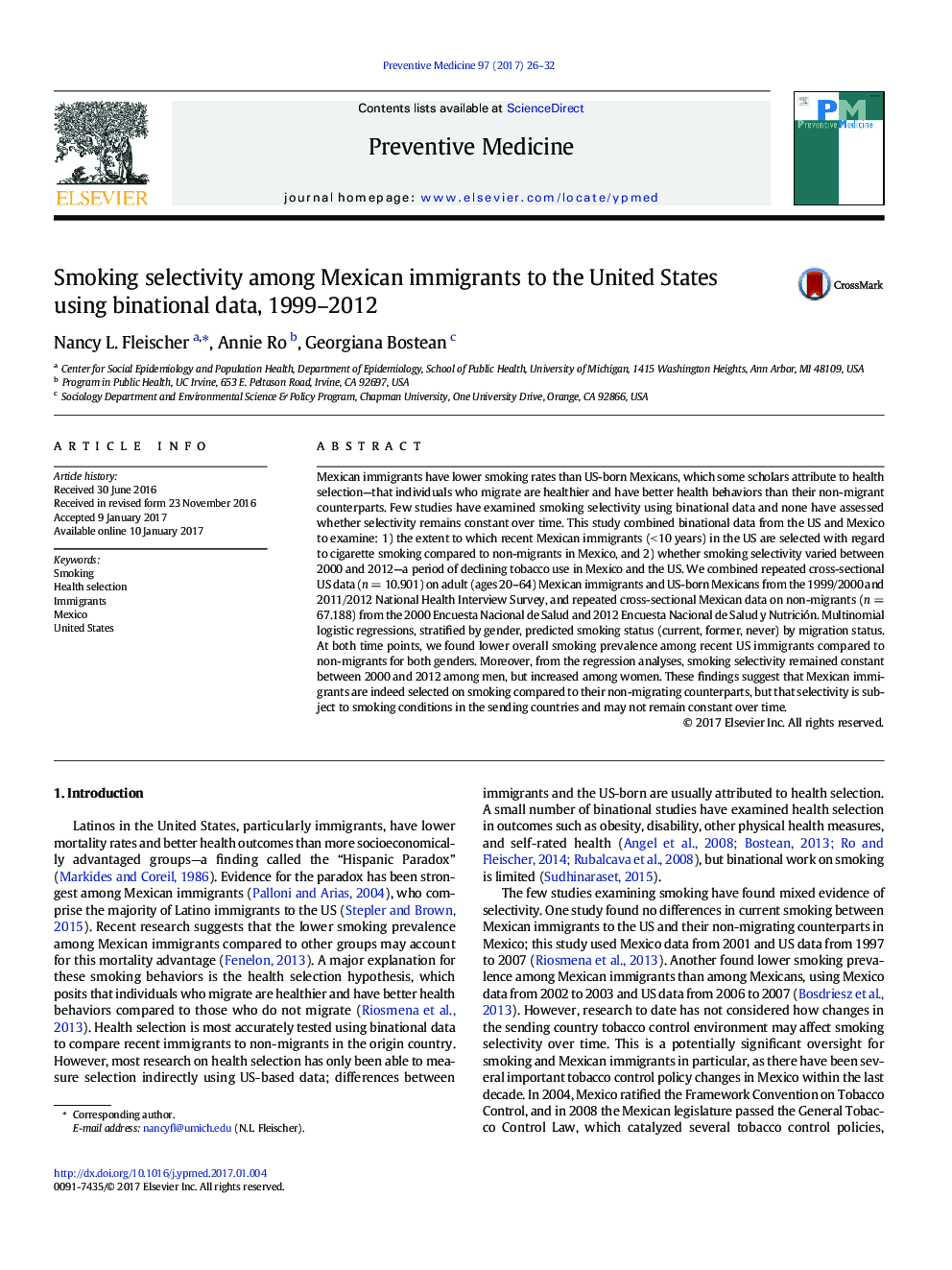| کد مقاله | کد نشریه | سال انتشار | مقاله انگلیسی | نسخه تمام متن |
|---|---|---|---|---|
| 5635791 | 1581617 | 2017 | 7 صفحه PDF | دانلود رایگان |
- Binational Mexico-US data were used to examine immigrant smoking selectivity.
- Smoking selectivity among Mexican immigrants to the US was apparent.
- Men displayed smoking selectivity in 2000 and 2012.
- Women displayed smoking selectivity in 2012 only.
- Origin country context is important in understanding immigrant smoking.
Mexican immigrants have lower smoking rates than US-born Mexicans, which some scholars attribute to health selection-that individuals who migrate are healthier and have better health behaviors than their non-migrant counterparts. Few studies have examined smoking selectivity using binational data and none have assessed whether selectivity remains constant over time. This study combined binational data from the US and Mexico to examine: 1) the extent to which recent Mexican immigrants (< 10 years) in the US are selected with regard to cigarette smoking compared to non-migrants in Mexico, and 2) whether smoking selectivity varied between 2000 and 2012-a period of declining tobacco use in Mexico and the US. We combined repeated cross-sectional US data (n = 10.901) on adult (ages 20-64) Mexican immigrants and US-born Mexicans from the 1999/2000 and 2011/2012 National Health Interview Survey, and repeated cross-sectional Mexican data on non-migrants (n = 67.188) from the 2000 Encuesta Nacional de Salud and 2012 Encuesta Nacional de Salud y Nutrición. Multinomial logistic regressions, stratified by gender, predicted smoking status (current, former, never) by migration status. At both time points, we found lower overall smoking prevalence among recent US immigrants compared to non-migrants for both genders. Moreover, from the regression analyses, smoking selectivity remained constant between 2000 and 2012 among men, but increased among women. These findings suggest that Mexican immigrants are indeed selected on smoking compared to their non-migrating counterparts, but that selectivity is subject to smoking conditions in the sending countries and may not remain constant over time.
Journal: Preventive Medicine - Volume 97, April 2017, Pages 26-32
